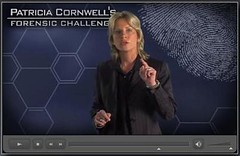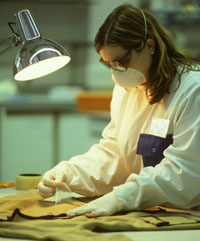 by blogger jgl
by blogger jglOur first email. From a forensic science student...
I have an English course that requires me to engage in a blog conversation and use the information gathered as a source in a research paper. My proposed topic deals with footwear impressions and how the environment can affect this type of evidence.
I understand this is a lot to ask but I would like to make a request for a blog post. I was wondering if you could educate me on what the new techniques are for casting footwear impressions in snow. Any help you or your blogger colleagues can give will be greatly appreciated.
|
I figure a couple links might help out. If anyone has other good ones, please post it in the comments section.
SWGTREAD looks like a relatively new scientific working group for impression evidence. This is a good. I'm not sure if there was any official or semi-official organization for impression examiners. Obviously, for an area that relies heavily on the examiners *interpretation* of the evidence, sharing and trying to develop standardized methods is necessary.
Here are a couple links to pdf files of what looks to be a
Journal of Forensic Identification publication (i'm not sure who is hosting the files).
Lab Collection &
Field CollectionNeat site from footprint investigators in the Maryland area -
C.A.S.T.Concerning shoeprints in snow, who better to go to than a distributor who is trying to sell a product! -
Snow Print WaxAnd how about a link to a numbskulled professor's
powerpoint?
There we go. A lot of information is all over the place. Does anyone think it would be useful/possible to have sections of AAFS work up some web pages containing information about the field just as a service to the public? Or just have a team that contributes to the information on wikipedia (and babysits it for accuracy)?



























